Knitting and Dementia: A Therapeutic Thread of Hope
Picture this: a cozy room filled with the gentle click-clack of knitting needles and a group of individuals engaged in creating beautiful patterns. Now, imagine that this setting is not just about creating garments, but also about improving the lives of people living with dementia. Yes, knitting—a centuries-old craft—has emerged as a powerful therapeutic tool for individuals facing the challenges of dementia. In this blog post, I will talk about the benefits of knitting for people with dementia and how it can positively impact their overall well-being.
Engaging the Mind and Body
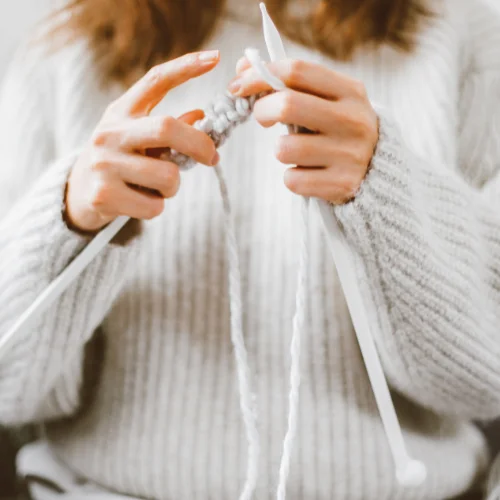
Knitting is often viewed as a mere hobby, but it is so much more than that. For individuals with dementia, it can be an effective way to engage both the mind and body. The repetitive motions involved in knitting can help stimulate cognitive function, improve focus, and enhance dexterity. The rhythmic nature of knitting creates a sense of calm and stability, reducing anxiety and restlessness commonly associated with dementia.
Consider the case of Mary, a woman diagnosed with early-stage dementia. Through knitting, Mary found solace and purpose. As she worked on her knitting project, her hands moved with precision, and her mind was occupied with counting stitches and following patterns. Knitting became her oasis, a means to stay mentally active and connected to the present moment.
Emotional Well-being and Sense of Accomplishment
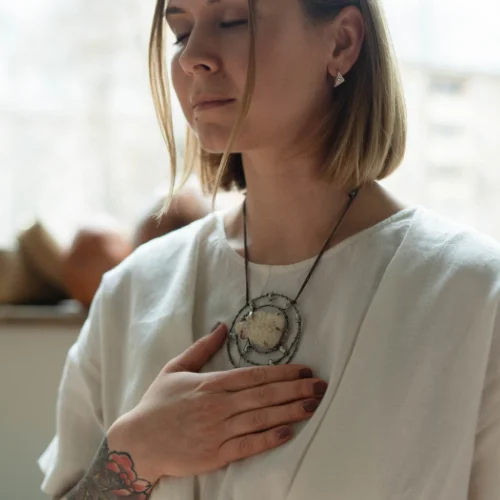
One of the most significant challenges for individuals with dementia is maintaining a sense of self-worth and accomplishment. Knitting offers a unique opportunity for them to feel productive and capable. Completing a knitting project, whether it’s a scarf, hat, or blanket, gives them a tangible result—a physical reminder of their abilities.
Meet John, who was once an avid gardener and skilled carpenter before dementia took its toll. When John discovered knitting, he regained a sense of purpose. The feeling of holding a finished knitted item in his hands brought a smile to his face. Knitting allowed him to reconnect with his past accomplishments, boosting his self-esteem and overall emotional well-being.
Social Interaction and Community

Knitting is a social activity that brings people together, fostering connections and a sense of belonging. For individuals with dementia, who often experience isolation and a loss of social connections, knitting groups provide a valuable support network. Sharing stories, laughter, and knitting tips, participants can find solace in the company of others who understand their journey.
Sarah, a daughter caring for her mother with dementia, discovered a local knitting circle. Through this group, Sarah’s mother formed new friendships and found comfort in the shared experiences. They would meet regularly, each bringing their knitting projects, and spend hours chatting, creating a vibrant and supportive community. Knitting became a lifeline, offering social engagement that greatly enriched her mother’s life.
Enhancing Cognitive Function and Memory

Knitting has been found to have a positive impact on cognitive function and memory retention. The intricate patterns, counting stitches, and following instructions require concentration and mental agility. These activities help exercise and strengthen neural pathways, potentially slowing down cognitive decline.
Take the case of Michael, a retired professor diagnosed with dementia. Despite his condition, Michael’s love for learning never waned. Knitting became his new intellectual pursuit. As he tackled more complex patterns and techniques, his cognitive abilities were put to the test. Over time, he noticed improvements in his memory and attention span, which not only boosted his confidence but also improved his overall quality of life.
How can I get started with knitting if I have never done it before?
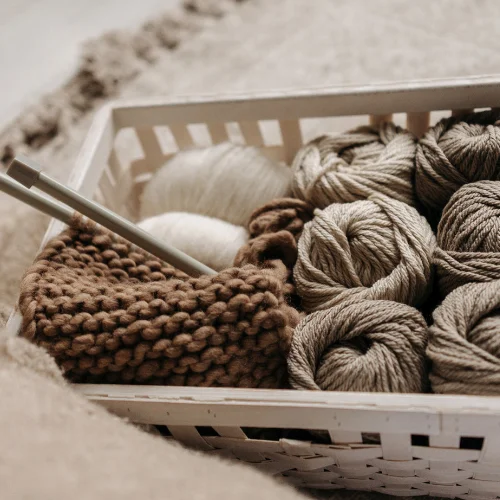
First, gather your materials. You’ll need knitting needles and yarn. For beginners, it’s best to choose medium-weight yarn and needles in a size recommended on the yarn label. This will make it easier for you to handle and see your stitches as you learn. You can find knitting needles and yarn at craft stores, online retailers, or even in some department stores.
Next, familiarize yourself with the basic knitting terms and techniques. One of the first things you’ll want to learn is how to cast on, which is how you create the first row of stitches on your needle. There are different casting-on methods, such as the long-tail cast-on or the knitted cast-on. YouTube tutorials and knitting books are excellent resources for visual demonstrations and step-by-step instructions.
Once you’ve cast on, you’ll start knitting stitches. The two most common stitches are the knit stitch and the purl stitch. The knit stitch creates a smooth V-shaped stitch, while the purl stitch creates a bumpier texture. These two stitches are the building blocks of countless knitting patterns. Practice knitting and purling rows to get comfortable with the motions. As you become more confident, you can explore different stitch patterns and techniques.
Don’t be discouraged if your first attempts don’t look perfect. Knitting, like any skill, takes practice. Remember that mistakes are part of the learning process. They can be easily fixed by unraveling a few stitches or even starting over if needed. Keep practicing and experimenting, and you’ll see improvement over time.
Lastly, join a knitting community or take a class if you want to learn from others and gain additional support. Local yarn shops often offer knitting classes for beginners, where you can learn in a group setting and receive guidance from experienced knitters. Online forums and social media groups are also great places to connect with fellow knitters, ask questions, and find inspiration.
Will knitting be too difficult for me to learn and remember due to my dementia?
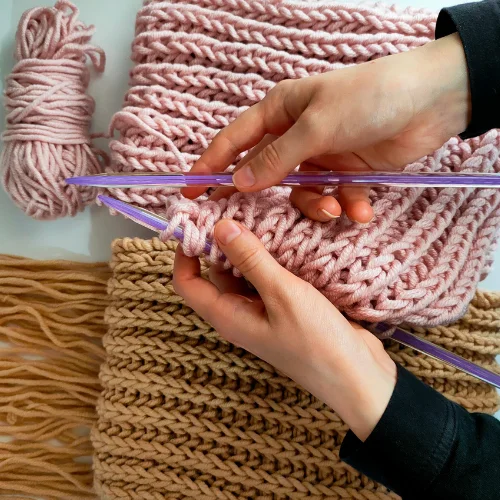
Learning to knit may present some challenges if you’re dealing with dementia, but it’s not necessarily an impossible task. Knitting can be a fun and rewarding activity that can provide a sense of accomplishment and relaxation.
While dementia may affect your memory and cognitive abilities, it doesn’t mean you can’t engage in new activities. Many people with dementia find comfort in familiar routines, and knitting could become a soothing and repetitive hobby that brings joy and a sense of purpose.
Starting slowly and with patience is key. You may need to relearn certain knitting techniques or refer to tutorials frequently, but with practice, your muscle memory can kick in, making it easier to remember the motions involved in knitting.
Repetition can be beneficial in reinforcing skills and retaining information. For instance, reminding yourself of the steps to knit a basic stitch each time you pick up your needles can help solidify the process in your mind.
Additionally, knitting can have cognitive benefits. Engaging in knitting can stimulate your brain, promoting focus and concentration. As you work on various knitting patterns, you’ll be exercising your problem-solving skills and hand-eye coordination. The act of following a knitting pattern or counting stitches can positively challenge your cognitive abilities, potentially helping to maintain cognitive function.
Incorporating knitting into a supportive and understanding community can be helpful too. Joining a local knitting group or an online community of knitters can provide social interaction and a sense of belonging. Interacting with others who share the same interest can offer encouragement, motivation, and a support system to help you overcome challenges you may encounter due to dementia.
Are there any specific knitting techniques or projects that are recommended for individuals with dementia?
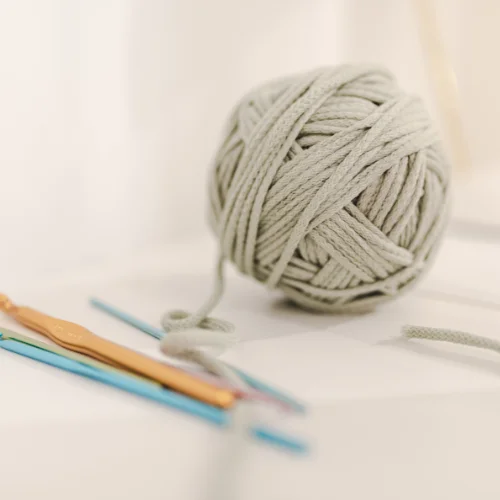
When it comes to individuals with dementia, engaging in activities that promote cognitive stimulation and relaxation can be highly beneficial. Knitting is a popular craft that can provide both of these benefits, allowing individuals with dementia to experience a sense of accomplishment and tranquility.
While there are no specific knitting techniques exclusively designed for individuals with dementia, certain approaches and projects can be recommended to enhance their knitting experience.
For example, simple and repetitive knitting patterns can be helpful, as they are easier to follow and require less cognitive effort. Basic stitches like garter stitch or stockinette stitch are great options. Additionally, using larger knitting needles and thicker yarn can make it easier for individuals with dexterity challenges to handle and manipulate the materials.
One recommended technique is called “knitting in the round.” This technique involves using circular knitting needles to create seamless tubes, such as hats or cowls. Knitting in the round eliminates the need to turn the work at the end of each row, making it simpler for individuals with dementia to follow the pattern continuously.
Another technique to consider is “arm knitting,” which involves using your arms as knitting needles to create chunky and cozy blankets. This technique eliminates the need for traditional knitting needles, making it easier for individuals with limited dexterity or hand-eye coordination to participate in knitting activities.
When selecting projects for individuals with dementia, it is essential to consider their skill level and personal preferences. Scarves, dishcloths, and simple blankets are popular choices as they require repetitive stitching and can be completed relatively quickly.
Creating squares for charity quilts or knitting items for local hospitals and nursing homes can also provide a sense of purpose and community involvement. Furthermore, incorporating bright colors and contrasting yarns can help maintain interest and visual stimulation during the knitting process.
Conclusion
In a world that often focuses on the limitations imposed by dementia, knitting offers a ray of hope. It engages the mind, nurtures emotional well-being, fosters social connections, and enhances cognitive function. Through knitting, individuals with dementia can find joy, purpose, and a renewed sense of self.
So, is knitting good for people with dementia? The answer is a resounding “yes!” If you or someone you know is living with dementia, consider introducing knitting into their routine. Witness firsthand the transformative power of this therapeutic thread.
Share your thoughts and experiences in the comments below. How do you think knitting can positively impact the lives of individuals with dementia?
